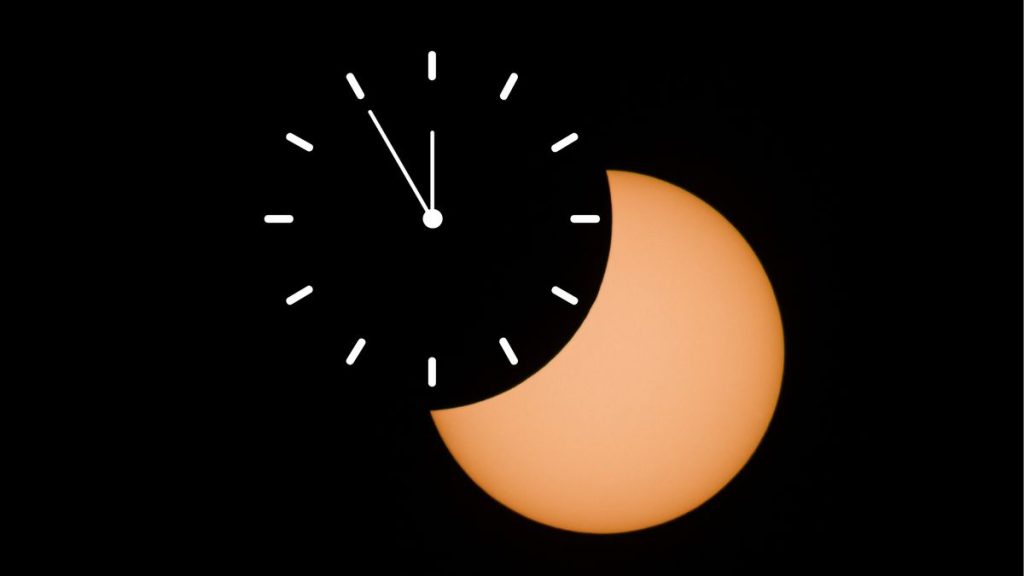The moon will appear to take a “bite” out of the sun during a deep partial solar eclipse on the morning of March 29
Globally, the eclipse will begin at 4:50 a.m. EDT (0850 GMT) , with the maximum eclipse — when the moon covers the largest portion of the sun — occurring at 6:47 a.m. EDT (1047 GMT) . However, exact timings vary by location . A detailed breakdown of eclipse times for different countries can be found in the table below.
Almost 10% of the world’s population lives in areas where at least part of the solar eclipse will be visible according to timeanddate.com
Swipe to scroll horizontally
Time of partial solar eclipse by country (in local time)
Country
Start of Eclipse (Local Time)
End of Eclipse (Local Time)
Belgium
11:11 a.m.
1:02 p.m.
Canada
6:56 a.m.
8:20 a.m.
France
10:55 a.m.
1:01 p.m.
Ireland
9:54 a.m.
12:03 p.m.
Norway
11:12 a.m.
1:35 p.m.
United Kingdom
9:56 a.m.
12:14 p.m.
United States
6:13 a.m.
7:17 a.m.
We have selected a handful of countries for timings. For timings tailored specifically to your location, e.g. your nearest city, and for a full list of countries where the eclipse is visible head over to timeanddate.com
NASA’s partial solar eclipse map shows in great detail where the moon’s shadow will sweep across Earth:
NASA map shows where the March 29, 2025, eclipse can be seen. (Image credit: NASA’s Scientific Visualization Studio)
Yellow lines indicate the percentage of the sun covered at maximum eclipse and green lines mark the time of maximum eclipse in UTC. Orange loops show where the eclipse begins or ends at sunrise and sunset. Along the sunrise line (on the left), locations such as Niagara Falls, Washington D.C., and Virginia Beach will witness a roughly 1% eclipse at sunrise, marking the point where the eclipse concludes as the sun rises.
To the right of the map, another orange line runs through Newfoundland, Canada, indicating where the eclipse will begin at sunrise. Blue lines highlight locations where the maximum eclipse happens at sunrise or sunset. Times are in UTC (e.g., 10:30 UTC = 6:30 a.m. EDT).
If you are unable to catch the solar eclipse in person, we’ll be livestreaming the event on Space.com courtesy of timeanddate so you can enjoy the deep partial solar eclipse and maybe even some rare “solar horns solar eclipse live blog
How to watch the eclipse safely
Eclipse glasses are perfect for viewing the partial solar eclipse safely. (Image credit: Pablo Blazquez Dominguez/Getty Images)
Never use regular sunglasses to observe the sun . The only safe way to look directly at the sun is through specifically designed solar filters, using solar eclipse glasses for direct viewing and solar filters for telescopes and binoculars .
We have rounded up some of the best solar viewing kit deals
Editor’s Note: If you snap a photo of the solar eclipse and would like to share it with Space.com’s readers, send your photo(s), comments, and your name and location to spacephotos@space.com.








